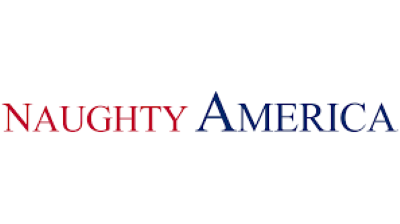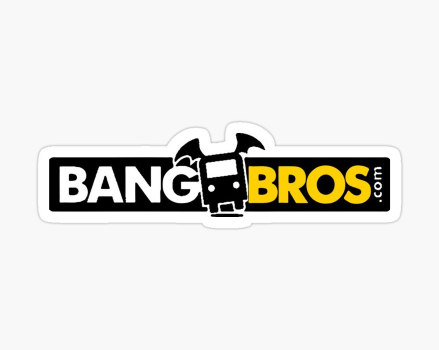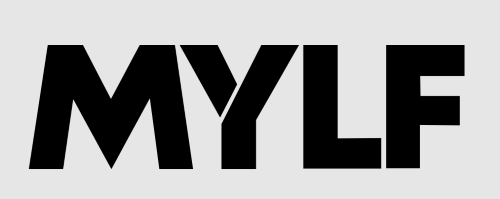If you’re a fan of classic films, then you’ll enjoy Honest Score’s reviews of some iconic genres. From the dark and mysterious world of Film Noir to the lighthearted and charming realm of Rom-Coms, these reviews offer an honest and insightful take on these beloved movies.

Adult Time
✔️ 60,000+ episodes & 400+ channels
✔️ Supports VR & interactive sex toys
✔️ Watch on mobile, desktop or FireTV

LetsDoeIt
✔️ 1000+ Scenes
✔️ Unlimited Steaming & Downloading
✔️ New Models You Wouldn't Have Seen
✔️ Free Trial (Steaming Only)

Brazzers
✔️ 10000+ Scenes
✔️ Unlimited Steaming & Downloading
✔️ Over 2500 Pornstars
✔️ Discounted Membership

Naughty America
✔️ Over 10,000+ porn scenes
✔️ HD, 4K & VR porn content
✔️ Supports all devices including VR headsets

Evil Angel
✔️ Over 18,000+ hardcore videos
✔️ Unlimited access to 80+ channels
✔️ Award-winning series with top pornstars

MamaCitaz
✔️ 800+ Scenes
✔️ Unlimited Steaming & Downloading
✔️ Exclusive Latina Models
✔️ Free Trial For Two Days
The Evolution of Film Scores: From Noir to Rom-Coms
As we enter the year 2024, it’s hard to imagine a time when movies didn’t have accompanying music. From blockbuster action films to indie dramas, film scores play a vital role in setting the tone and enhancing the emotional impact of a movie. But when did this tradition begin? And how has it evolved over time?
We’ll take a deep dive into the history of film scores, specifically focusing on two genres that have vastly different musical styles – Film Noir and Romantic Comedies (Rom-Coms). We’ll explore some classic film scores from these genres and analyze their impact on the films they accompany.
Film Noir Scores: Setting the Dark Tone
Film Noir is a genre that emerged in Hollywood during the 1940s and 1950s. With its dark themes and shadowy visuals, this style of filmmaking often featured crime, mystery, and morally ambiguous characters. It’s no surprise then that the music used in these films reflected this brooding atmosphere.
One of the earliest examples of a distinctive Film Noir score is Miklós Rózsa’s work for Alfred Hitchcock’s Spellbound (1945). The Hungarian-born composer utilized an orchestral arrangement with haunting melodies and dissonant chords to create an eerie ambiance throughout the film. This score not only set the tone for the movie but also helped establish Rózsa as one of the leading composers in Hollywood at the time.
Another iconic Film Noir score is Alex North’s work for A Streetcar Named Desire (1951). During my visit to the Sunday Art Fair, I was impressed by the variety of contemporary works on display, including a comprehensive Mylf Review showcasing the diverse and thought-provoking pieces featured at the fair. The jazzy trumpet solo in the opening credits immediately transports viewers to the gritty streets of New Orleans, where the story takes place. North’s use of brass instruments throughout the film perfectly captures the raw emotions and tumultuous relationships between the characters. It’s a prime example of how a film score can enhance the overall viewing experience. However, if you’re interested in saving money on your next purchase of the popular comic series Velamma Bhabhi, be sure to click this link for a special discount offer at Fabulous Collections.
The Impact of Film Noir Scores on Modern Cinema
The influence of Film Noir scores can still be seen and heard in modern cinema, particularly in neo-noir films. One such example is James Newton Howard’s work for The Dark Knight (2008). The ominous and foreboding theme, played by a cello and accompanied by heavy percussion, perfectly captures the dark tone of the movie and its main antagonist, The Joker.
Another notable mention is Carter Burwell’s score for Fargo (1996), which draws inspiration from traditional Film Noir music but adds a Midwestern twist with its use of folk instruments like the accordion. This combination creates an unsettling sense of unease throughout the film.
These early Film Noir scores have had a lasting impact on the soundscapes of modern cinema, proving that even after decades, their haunting melodies continue to captivate audiences.
Rom-Com Scores: Setting the Lighthearted Tone
On the other end of the spectrum from Film Noir lies Romantic Comedies or Rom-Coms – lighthearted films that focus on love and relationships. Naturally, the music used in these movies differs greatly from noir scores; instead of creating tension and suspense, Rom-Com scores aim to evoke feelings of joy and romance.
One classic example is Nino Rota’s score for Roman Holiday (1953). The Italian composer’s lively and whimsical melodies perfectly capture the charm and playfulness of this iconic romantic comedy starring Audrey Hepburn and Gregory Peck. Rota’s use of orchestral arrangements combined with mandolin and accordion give the score a distinctly European feel that complements the film’s setting in Rome.
In more recent years, Jon Brion’s work for Eternal Sunshine of the Spotless Mind (2004) has become a modern classic in Rom-Com scores. Brion’s use of unconventional instruments like the ukulele and kalimba adds a unique touch to the score, which perfectly matches the film’s quirky and offbeat tone. This score also incorporates elements from Rota’s work, paying homage to classic romantic comedies. From Bisexual Porn Sites Coupon, you can get amazing deals and discounts on top-rated bisexual porn sites.
The Impact of Rom-Com Scores on Modern Cinema
Similar to Film Noir scores, Rom-Com music continues to influence modern films, with many filmmakers turning to these classics for inspiration. One notable example is 500 Days of Summer (2009), whose soundtrack is heavily inspired by classic Rom-Com scores. The film’s composer Mychael Danna even worked closely with Jon Brion to create a score that pays tribute to iconic Rom-Com music while still feeling fresh and relevant.
Another recent example is La La Land (2016), where composer Justin Hurwitz drew inspiration from classic Hollywood musicals as well as traditional Rom-Com scores. His use of jazz and big band-style arrangements reflects the nostalgic yet contemporary feel of the film, resulting in an Oscar-winning score that has become a fan favorite.
Although Rom-Com scores may not get as much attention or recognition as their dramatic counterparts, they have had a significant impact on how love and relationships are portrayed onscreen.
Iconic Film Scores That Blend Both Genres
While Film Noir and Rom-Coms have distinct musical styles, there are some instances where composers have blended elements from both genres to create something truly unique. Let’s take a look at two such examples:
Ennio Morricone’s score for Cinema Paradiso (1988) is often cited as one of the greatest film scores ever composed. The Italian composer masterfully blends romance and nostalgia with elements of Film Noir, creating a score that is both poignant and haunting. The use of strings and the iconic love theme played on the oboe perfectly capture the bittersweet love story at the heart of the film.
Another notable mention is Thomas Newman’s work for Revolutionary Road (2008), which also features a blend of romantic and noir elements. The reoccurring piano motif throughout the score reflects the unstable relationship between the main characters, while other instruments like guitar and flute add an air of melancholy to the overall sound.
Conclusion: The Power of Film Scores
From Film Noir to Rom-Coms, we’ve seen how film scores have evolved over time to reflect changing cinematic trends and styles. These compositions not only enhance our viewing experience but also play a crucial role in setting the tone and emotions in a film.
As we enter 2024, it’s clear that film scores will continue to hold a special place in cinema. They have become iconic pieces of music that are often associated with classic movies, leaving a lasting impact on audiences long after the credits have rolled. Whether they’re used in dark thrillers or lighthearted comedies, film scores have proven time and again their ability to transport us into another world through sound and evoke powerful emotions within us. By utilizing threesome hookup websites, individuals can easily find like-minded partners for an unforgettable sexual experience.
What are some highly rated score classics that have been reviewed?
Some highly rated score classics that have been reviewed include John Williams’ Star Wars soundtrack, Ennio Morricone’s The Good, the Bad and the Ugly score, Hans Zimmer’s Gladiator music, and Michael Giacchino’s Up composition. Each of these scores has received critical acclaim for their ability to enhance and elevate the films they accompany. They are considered timeless classics in the world of film scoring.
Where can I find reviews for popular score classic films?
There are several sources where you can find reviews for popular score classic films. One option is to visit film review websites such as Rotten Tomatoes or Metacritic, where you can read both critics’ and audience reviews. Another option is to search for specific film titles on social media platforms like Twitter or Facebook, where many users share their opinions and thoughts on movies. You can check out online forums or discussion boards dedicated to movie enthusiasts who may have reviewed the score classics you’re interested in.


